There isn’t much that can’t be fixed with duct tape. Garden tools are no exception. While I wouldn’t trust a loose-headed pick-axe after wrapping it with several rounds of shiny silver duct tape, I would trust it to fix my reliable yet cheap, plastic Rite-Aid watering can with a broken rose attachment.
Plastic is, as we know, forever. Except in the case when it photo-degrades. Plastic pots or tools become brittle and cracked, and eventually useless for their intended purpose. When the rose attachment (that part that makes water come out like rainfall) shattered into a dozen pieces at the slighted touch the other day, I knew I would be hard pressed to find a replacement of this seasonal item in early winter. So I called upon my inner MacGyver.
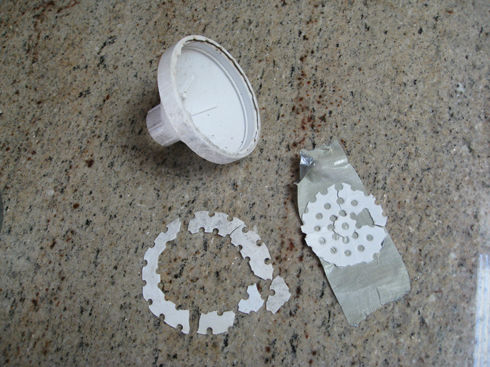
When I tried to tape the tiny center piece, which was the only thing broken at the time, back
on to the rest of the rose, the entire thing collapsed.
I removed all the broken pieces and then covered the entire surface with duct tape.
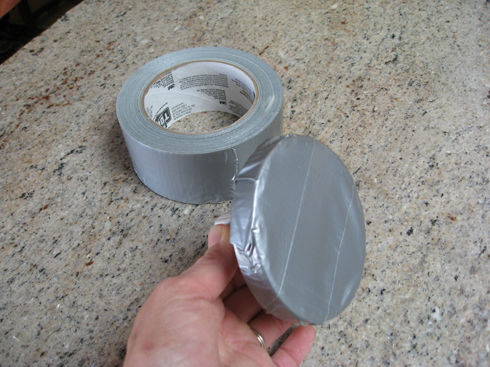
Using 3 pieces of duct tape ensures coverage and enough to wrap around the sides.
Then I employed the use of an awl to poke holes in the tape similarly to the original rose attachment. An awl is a pointy metal tool usually used for punching holes in leather (to make extra belt buckle holes or shoelace holes), and it makes a nice round hole in tape.
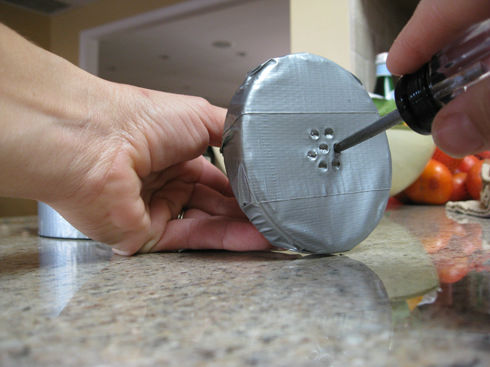
A small Phillips screwdriver would work just as well, most likely.
Continuing on around in a circle, soon the entire surface was covered with holes.
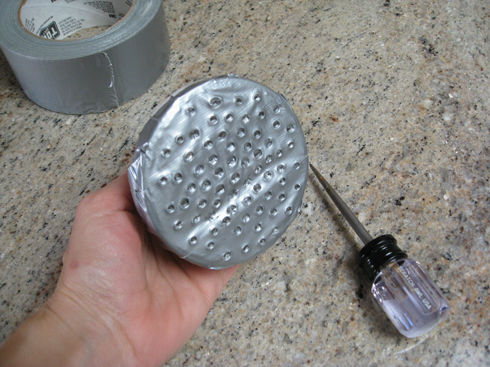
The final test was to water something. It worked!
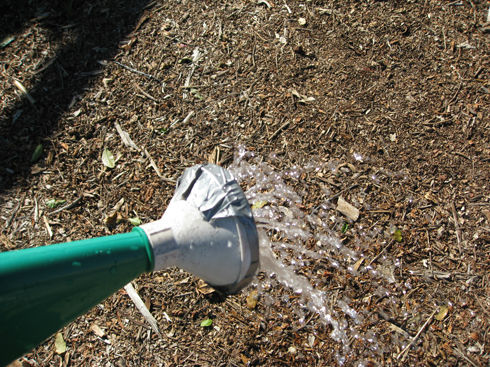
Admittedly, it’s not the gentle rainfall I was hoping for, but the original rose attachment wasn’t all that gentle either. If I had to do it over, I’d make fewer holes. This will do the trick, though, until next spring when I can get a new watering can – or come up with a better material than duct tape to solve the problem.
Any suggestions? Share them here.




Thanks, I just fixted my lawnware watering can nozzle, I have been using for 15 years. The can is in good condition, only the nozzle was broken in small particles. THANKS AGAIN.
Let me know how it goes!
You are so right! I saw pictures, as I was researching, of those buckets with holes in them. It makes so much sense to use another piece of plastic. I will try using the bottom of a plastic bottle and see how that goes. Thanks for the idea!
Mmmmm! I admire your desire to milk the most out of a tool, but in this case you’re going further than I would venture 🙂
I can’t explain my thoughts scientifically, for lack of physics knowledge, but I think the water is going to behave much differently coming out of the duct-tape-with-holes (which has ragged edges) than it would from solid-plastic-with-holes (which has smooth edges).
If it were me, and it probably will be eventually, I would find a similarly sized disc of plastic or, preferably, thin metal, and drill holes where you want them, then file the edges, THEN duct tape it on the spout.
I also like to keep in mind that the way lots of Kenyans (and others) do their watering is by poking holes in a 2-liter bottle and lugging bottle after bottle over the whole garden. It reminds me that I should be grateful 🙂